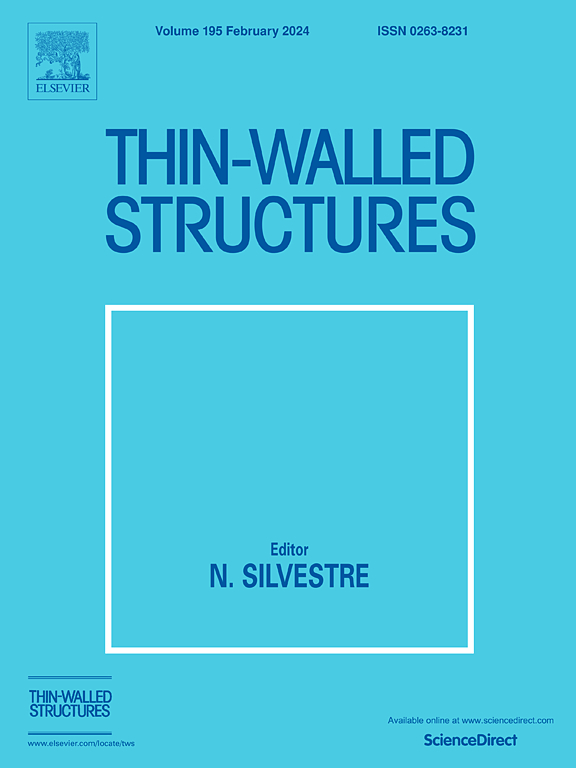A machine learning-driven prediction of lower-bound buckling design load for cylindrical shells under localized axial compression
IF 5.7
1区 工程技术
Q1 ENGINEERING, CIVIL
引用次数: 0
Abstract
Thin-walled cylindrical shells are extensively used across various fields because of their exceptional load-carrying efficiency. In practical applications, these structures are typically subjected to localized axial compression rather than the uniform axial compression considered in traditional research. A reliable and efficient buckling design method for cylindrical shells under such localized loads has not been developed to date. To address this challenge, a machine learning (ML) approach is proposed in this study for predicting the lower-bound buckling design load of cylindrical shells under localized axial compression. The artificial neural network (ANN) is selected as the ML model. Based on the modified energy barrier approach (MEBA), 500 samples are obtained by numerical simulations and their results are used to train the ANN model. The ANN model takes six geometric parameters, three material parameters, and one localized axial compression parameter as the inputs, while the lower-bound buckling load and the knockdown factor are the outputs. The feasibility and accuracy of the proposed ANN model are demonstrated by comparison with existing design codes and experimental results. The results suggest that this ML-based approach can fully exploit the load-carrying capacity of shells under localized axial compression, enabling more efficient and lightweight designs.
求助全文
约1分钟内获得全文
求助全文
来源期刊

Thin-Walled Structures
工程技术-工程:土木
CiteScore
9.60
自引率
20.30%
发文量
801
审稿时长
66 days
期刊介绍:
Thin-walled structures comprises an important and growing proportion of engineering construction with areas of application becoming increasingly diverse, ranging from aircraft, bridges, ships and oil rigs to storage vessels, industrial buildings and warehouses.
Many factors, including cost and weight economy, new materials and processes and the growth of powerful methods of analysis have contributed to this growth, and led to the need for a journal which concentrates specifically on structures in which problems arise due to the thinness of the walls. This field includes cold– formed sections, plate and shell structures, reinforced plastics structures and aluminium structures, and is of importance in many branches of engineering.
The primary criterion for consideration of papers in Thin–Walled Structures is that they must be concerned with thin–walled structures or the basic problems inherent in thin–walled structures. Provided this criterion is satisfied no restriction is placed on the type of construction, material or field of application. Papers on theory, experiment, design, etc., are published and it is expected that many papers will contain aspects of all three.
 求助内容:
求助内容: 应助结果提醒方式:
应助结果提醒方式:


